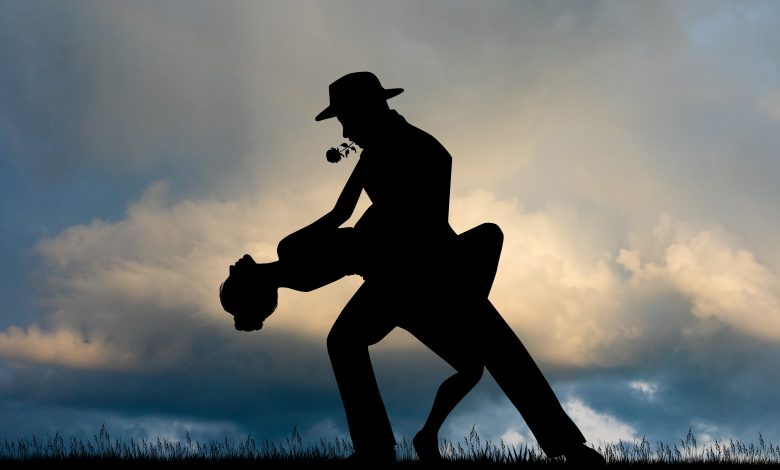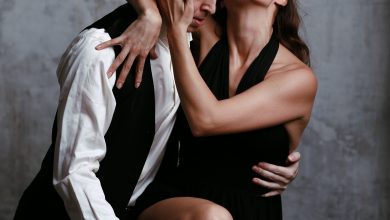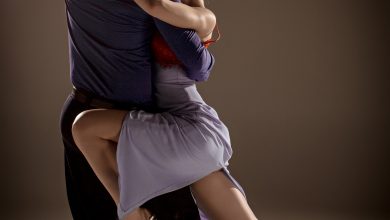Leader Back Sacada Technique and Combining Sacadas with Boleos

There are three parts to a back sacada, of which only two are visible to the onlooker:
- The leader must pivot the hips and feet as far around as possible, with the body still on axis, but full rotation has been achieved, with the torso/chest and hips/feet facing different directions. Both feet need to face away from the location of the sacada, so that the leader’s heels and rear end are facing the follower, if possible.
- Next comes the invisible part of this move. While in full rotation (ie disassociation), the leader rotates several degrees, with heels together. Don’t reach for the back step. This is the most important part of a back sacada because it helps avoid kicking the follower’s trailing ankle.
- As the follower is led to take a step, the leader steps back into the follower’s step, landing where the follower originally stood (replacing the follower’s space). That completes the sacada.
Some suggestions for making sacadas work better:
1. The leader should use a strong embrace on the open side to control the speed and size of the follower’s step
The leader chooses the speed of the move, and should not hurry the sacada. Control the follower’s step by maintaining the shape of the embrace. If more timeis needed to prepare for the leader’s back step, slow the follower down compared to the music: better a slow move than kicking an ankle.
If the leader pulls and pushes the follower to step, the leader loses control over the steps that happen after the sacadas. The leader should stay in control and in connection with the follower at all times.
It’s difficult for followers to find the right amount of pressure to use with their right arm. Too much, and the leader can’t feel where your feet are. Too little, and the leader can’t use the embrace to help the dance.
2. Use the closed side of the embrace to adjust for rotation
The leader’s right arm and the follower’s left arm need to be able to slide for this move to work. As the leader rotates, the leader’s right arms slides around the follower. The follower’s arm needs to slide around the leader too, which can be harder if they are a different height.
After the sacada, the embrace returns to normal, with the closed side opening up again. If you are having trouble detaching the follower’s hand and arm so that they slide, examine your sacada to see if you are pushing the follower off-balance: both people need to stay on-axis for this to work.
3. Adjust the distance between partners before the move
4. Use the follower’s side step for the leader back sacadas
Options after sacadas
As we have
been focusing on using sacadas to move around the dance floor, we’ve tried to
do linear sacadas, followed by linear moves in the line of dance. However,
there is not always space to continue in line of dance at a crowded milonga. One
option is to turn the follower in a giro (turn) around the leader after the
sacada. Another option is to change direction using a boleo, and then either
continue in line of dance or in place
with a turn, having had a few more seconds to evaluate the available space
while performing the boleo.



